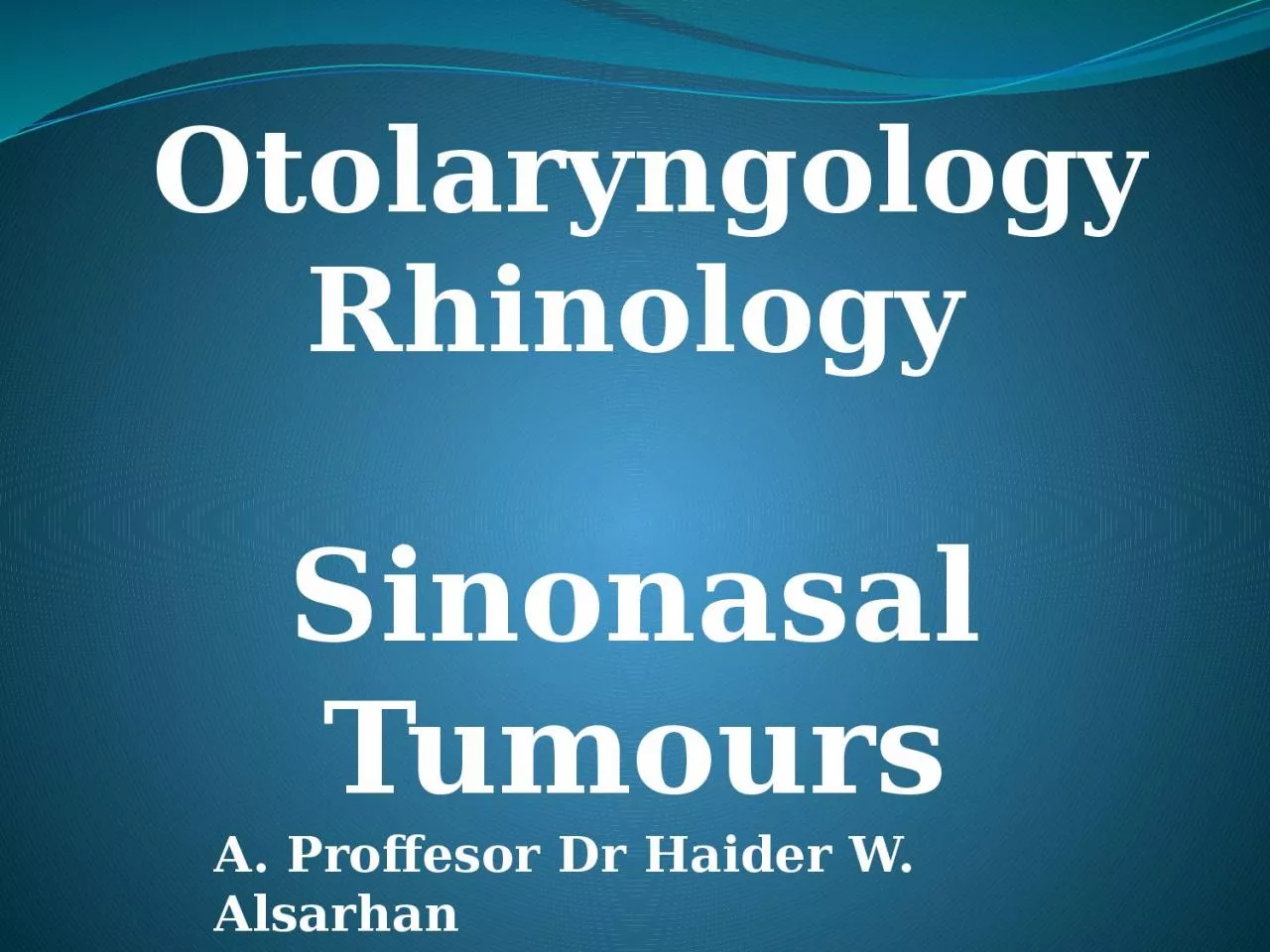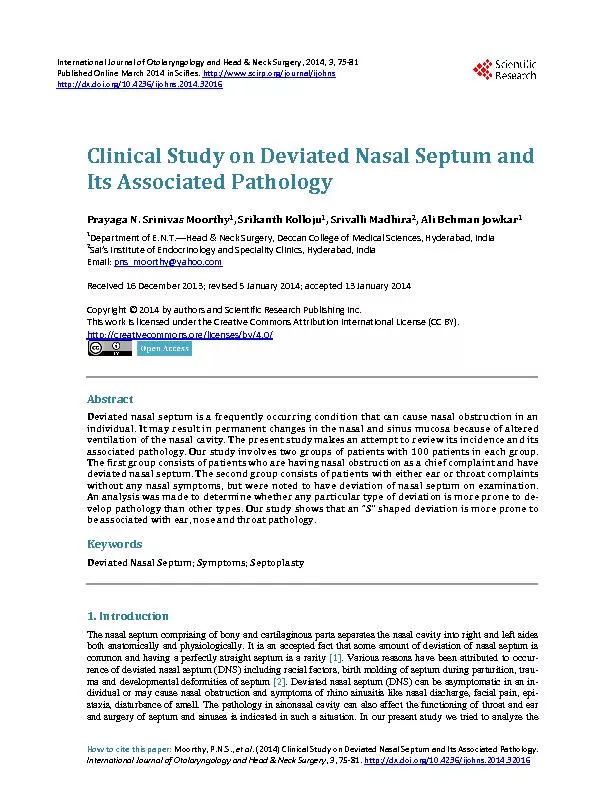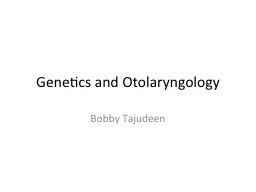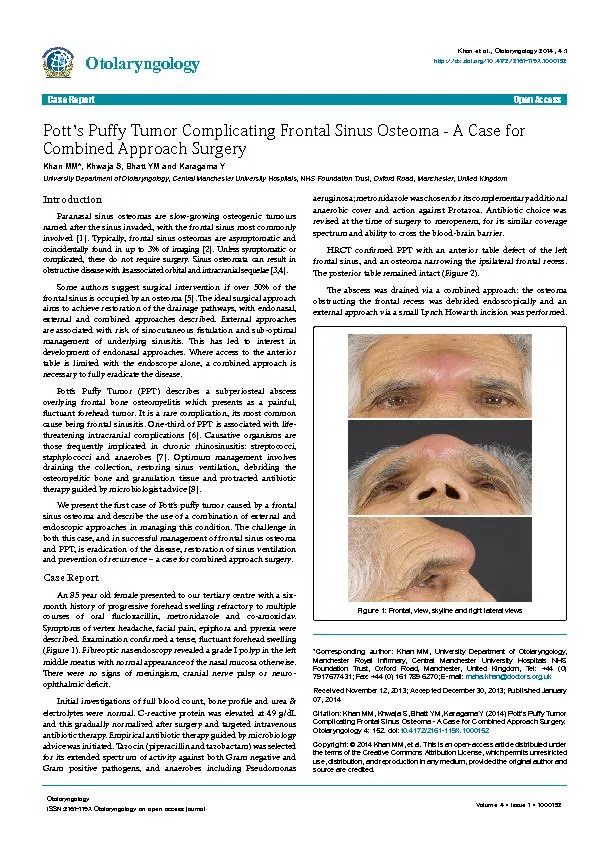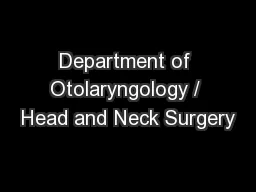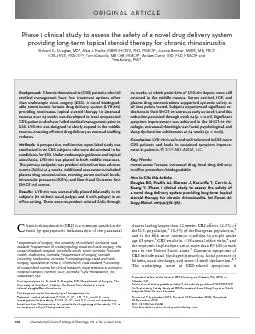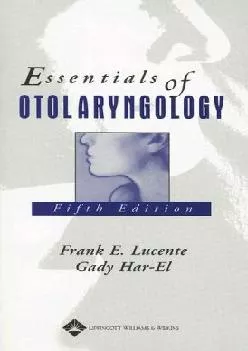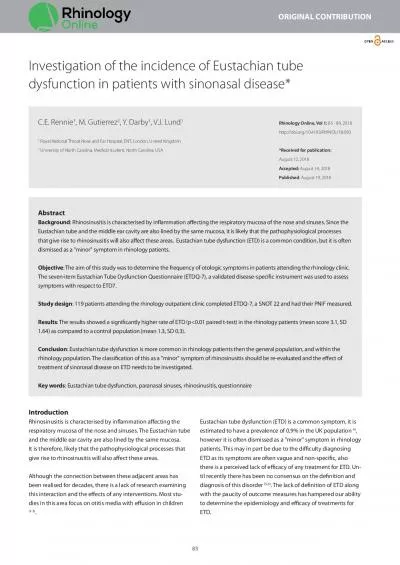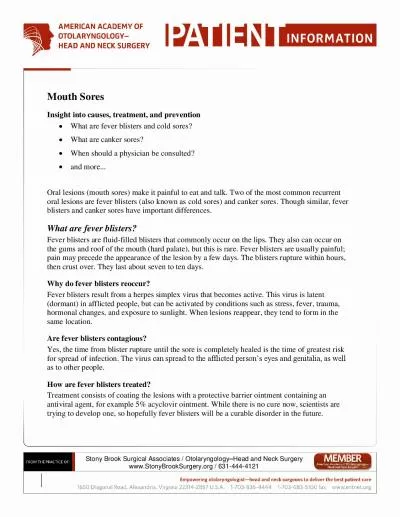PPT-Otolaryngology Rhinology
Author : jacey | Published Date : 2024-01-29
Sinonasal Tumours A Proffesor Dr Haider W Alsarhan Classification Both benign and malignant groups can be classified into epithelial non epithelial odontogenic
Presentation Embed Code
Download Presentation
Download Presentation The PPT/PDF document "Otolaryngology Rhinology" is the property of its rightful owner. Permission is granted to download and print the materials on this website for personal, non-commercial use only, and to display it on your personal computer provided you do not modify the materials and that you retain all copyright notices contained in the materials. By downloading content from our website, you accept the terms of this agreement.
Otolaryngology Rhinology: Transcript
Download Rules Of Document
"Otolaryngology Rhinology"The content belongs to its owner. You may download and print it for personal use, without modification, and keep all copyright notices. By downloading, you agree to these terms.
Related Documents

